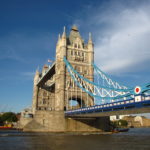 Another way to look at critical infrastructure.
Another way to look at critical infrastructure.
Linda Newton, at Carlton Univeristy in Canada teaches part of a program called ‘Infrastructure Protection & International Security’. It’s unique in that it combines students with a policy/international studies background with students with an engineering/architecture background. Each group takes courses from the other area along with several core courses.. Linda’s focus is on the definition used by both ISO 55000 and the European Commission but starts by positioning Critical Infrastructure from a historical perspective.
How did it evolve?
Is what was critical in the past still critical today and will it remain critical? This really gets students thinking about Critical Infrastructure. She uses photographs to illustrate the evolution of Critical infrastructure in the first lecture of the course & then asks ‘what’s the link between the following: e.g. Tower of London, London Docklands (now parks), Berlin Wall, Minuteman missile silos, etc.?’ (Answer: They were all critical at one point in history.)
The focus is on what makes an asset critical
This is both from the definition and then within its category, not on the vulnerability of assets from a security perspective but from an AM perspective. The role of an Asset Manager is to ensure infrastructure is managed as best as possible so that those who make emergency preparedness/business continuity planning decisions, whether the Critical Infrastructure is public or private, do so knowing the state of their respective critical assets. It’s the job of the AM to ensure there is redundancy and resiliency in critical assets, and advise accordingly, not because of an ‘evil intent’ but because it’s sound AM. It’s about information and making sure we have what we need at all phases to make informed decisions.

Recent Comments